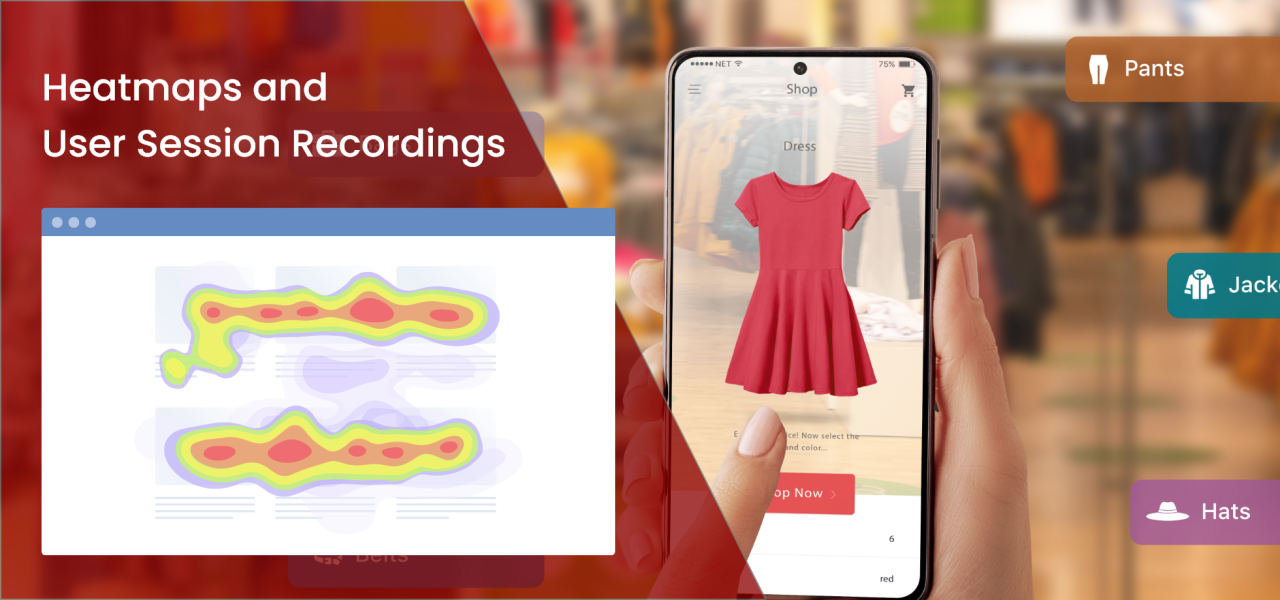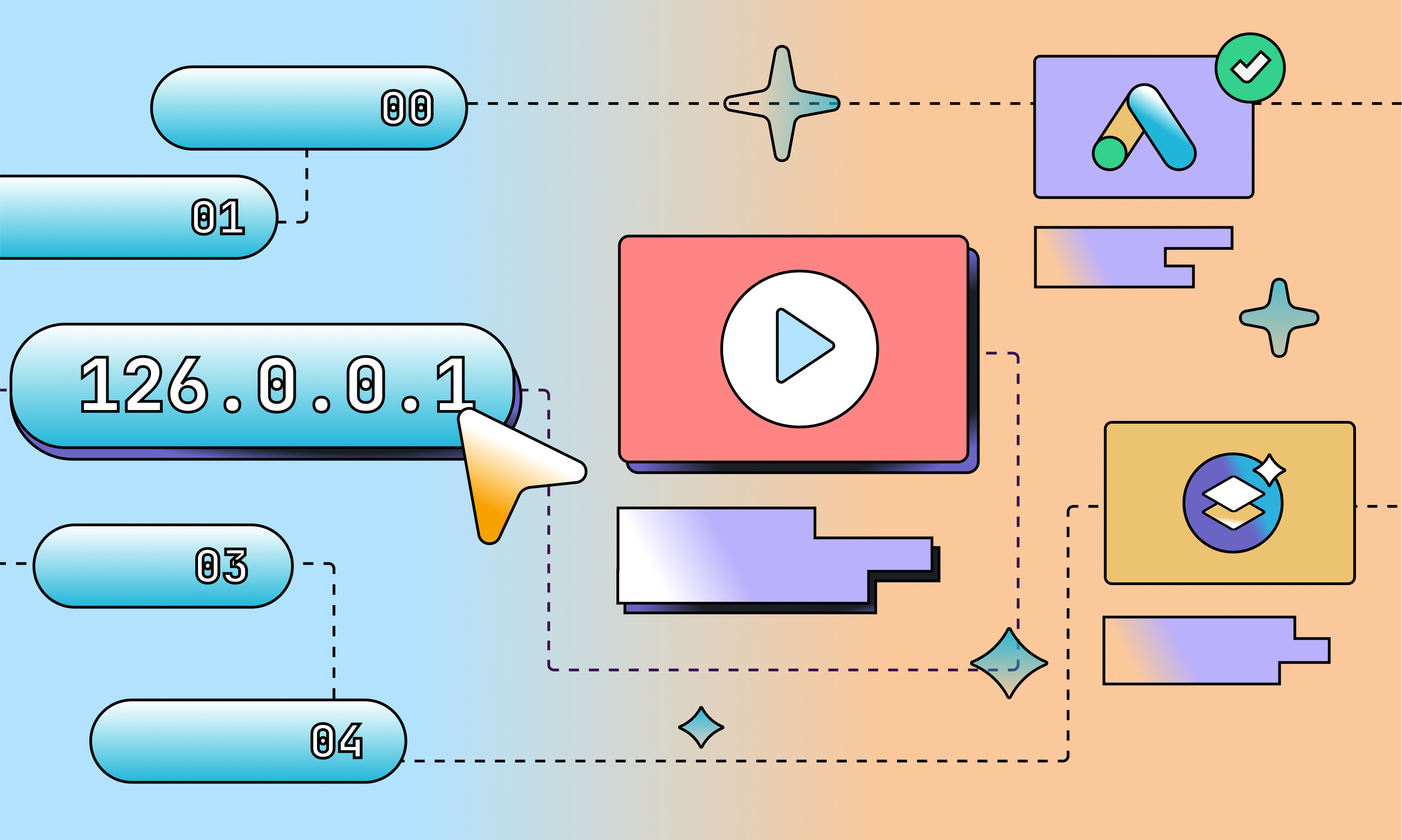Introduction to Prospects Visit Tracking
In the rapidly evolving landscape of digital marketing, the practice of tracking prospects’ visits has become indispensable for businesses seeking to thrive in an increasingly competitive environment. Prospect tracking involves the systematic monitoring of visitors to a website or online platform, providing invaluable insights into their behavior, preferences, and engagement patterns. This process is pivotal in effective lead management as it enables businesses to tailor their strategies based on real-time data.
Over the years, there has been a remarkable evolution in visitor tracking technology, driven by advancements in analytics and a heightened focus on enhancing customer engagement. Businesses now have access to sophisticated tools that go beyond simple click tracking, offering comprehensive insights into the entire customer journey. From the pages they visit to the time spent on each section, these technologies empower marketers to make informed decisions and optimize their digital presence.
The benefits of monitoring prospects’ online behavior are multifaceted. Firstly, it provides behavioral insights, allowing businesses to understand how visitors navigate through their platforms. This knowledge is instrumental in fine-tuning user experience and ensuring that the content aligns with the expectations and preferences of the target audience. Moreover, prospect tracking is a linchpin in the realm of conversion optimization. By identifying the touchpoints where visitors are most likely to convert, businesses can strategically place calls-to-action and streamline their conversion funnels.
Additionally, prospect tracking contributes significantly to the overall marketing strategy. Armed with data on user interactions, businesses can craft more personalized and targeted campaigns. Understanding which pages resonate most with visitors enables the creation of compelling content that aligns with their interests. This not only enhances engagement but also increases the likelihood of conversion.
In essence, the practice of monitoring prospects’ online behavior transcends mere analytics; it becomes a cornerstone of strategic decision-making in the digital age. As businesses continue to harness the power of prospect tracking, they position themselves to stay ahead of the curve and meet the dynamic demands of the modern consumer landscape.

Tools and Technologies for Effective Prospects Visit Tracking
In the realm of prospect visit tracking, the arsenal of tools and technologies available has expanded exponentially, offering businesses a diverse array of options to glean comprehensive insights into user behavior and engagement. Here’s a deep dive into the key tools shaping the landscape:
Leveraging Google Analytics for Comprehensive Insights
Google Analytics stands as a stalwart in the realm of website analytics, providing businesses with a robust platform to monitor and analyze prospect visits comprehensively. This powerful tool allows for the tracking of user behavior, from the pages they land on to the actions they take. With features like conversion tracking and detailed demographic information, businesses gain invaluable insights into the effectiveness of their digital strategies.
Exploring Advanced CRM Integration for Prospect Monitoring
As businesses recognize the need for a holistic approach to customer interactions, the integration of Customer Relationship Management (CRM) systems with prospect tracking has emerged as a game-changer. CRM integration enables the consolidation of data, offering a unified view of prospect interactions across various touchpoints. This not only streamlines communication but also enhances the ability to tailor offerings based on individual prospect journeys.
AI-Powered Visitor Tracking Tools for Predictive Analysis
Artificial Intelligence (AI) has ushered in a new era in prospect visit tracking, introducing tools that go beyond retrospective analysis to predictive insights. AI-powered tools leverage machine learning algorithms to predict future user behavior based on historical data. This enables businesses to anticipate prospect needs, personalize interactions, and automate certain aspects of the marketing and sales process.
As technology continues to advance, businesses are increasingly turning to a combination of these tools to create a comprehensive prospect visit tracking ecosystem. The synergy between analytics, CRM integration, and AI-powered tools empowers businesses to not only understand past interactions but also forecast future trends. This technological convergence is pivotal in staying agile and responsive in an ever-evolving digital landscape.
Utilizing Heatmaps and User Session Recording

Understanding visitor engagement on your website is crucial for improving user experience and increasing conversions. Heatmaps and session recording tools provide valuable insights into user behavior. This section explores these tools and how businesses can use them to gain deeper insights, make informed decisions, and drive success in the digital landscape. Heatmaps and session recording contribute to a comprehensive prospect visit tracking strategy, helping businesses refine their websites and personalize the user experience for their audience.
Understanding User Behavior through Heatmaps
Heatmaps have revolutionized the way businesses analyze user behavior on their websites. By visually representing data, heatmaps provide valuable insights into how visitors interact with web pages. Heatmaps typically track mouse movements, clicks, and scrolls, generating a visual representation of where users are focusing their attention. This allows businesses to identify popular areas of interest, such as high-traffic sections or frequently clicked buttons, enabling them to optimize website layout and design for improved user engagement.
Moreover, click tracking heatmaps provide detailed information on which elements receive the most clicks, helping businesses understand user preferences and behaviors. By analyzing heatmaps, businesses can identify areas of the website that may need improvement or optimization to enhance the user experience and increase conversion rates. For example, if a heatmap reveals that a significant portion of users are clicking on non-clickable elements, such as images or text, it may indicate a need to make those elements interactive or more prominent.
Gaining Deeper Insights with Session Recording
Session recording takes user behavior analysis to the next level by providing real-time recordings of individual user sessions. This allows businesses to observe exactly how visitors navigate their website, providing invaluable insights into user behavior, preferences, and pain points. Session recordings capture every interaction, including mouse movements, clicks, scrolls, and form submissions, providing a comprehensive view of the user experience.
By analyzing session recordings, businesses can identify usability issues, friction points, and barriers to conversion. For example, if a session recording reveals that users are struggling to complete a checkout process due to confusing navigation or unclear instructions, businesses can take immediate action to streamline the process and improve user experience. Session recordings also allow businesses to segment users based on behavior, enabling targeted optimizations and personalized experiences tailored to specific user groups.
Personalization Strategies Based on Visitor Interactions
One of the most powerful benefits of prospect visit tracking is the ability to personalize the user experience based on visitor interactions. By analyzing user behavior, businesses can gain valuable insights into individual preferences, interests, and needs, allowing them to deliver targeted content and personalized recommendations.
For example, if a visitor consistently interacts with content related to a specific product or service, businesses can dynamically adjust website content to highlight relevant offerings and promotions. Similarly, by tracking previous interactions and browsing history, businesses can create personalized recommendations and targeted marketing campaigns tailored to each visitor’s interests and preferences.
Overall, heatmaps and session recording provide invaluable insights into user behavior, enabling businesses to optimize their websites for improved user experience, increased engagement, and higher conversion rates. By leveraging these tools effectively, businesses can gain a competitive edge in today’s digital landscape and drive success in their prospect visit tracking efforts.
Implementing IP Tracking for B2B Prospect Identification

In the realm of B2B sales and marketing, identifying and prioritizing prospects is paramount for driving business growth. One powerful tool that enables businesses to achieve this is IP tracking technology. By harnessing the capabilities of IP tracking, businesses can gain valuable insights into the companies visiting their website, allowing for targeted and personalized outreach efforts.
Understanding IP Tracking Technology
IP tracking involves the process of identifying and tracking the IP addresses of visitors to a website or online platform. This technology allows businesses to uncover the companies behind the anonymous website visits, providing valuable data for lead identification and prospecting.
Identifying and Prioritizing B2B Prospects
Once IP addresses are captured and identified, businesses can prioritize their B2B prospects based on various factors such as company size, industry, and engagement level. This enables more strategic account-based marketing initiatives and tailored sales approaches, ultimately leading to higher conversion rates and revenue growth.
GDPR Compliance and Ethical Considerations
While IP tracking offers significant benefits for B2B prospect identification, it’s essential for businesses to prioritize GDPR compliance and uphold ethical marketing practices. Ensuring transparency and providing opt-out options for website visitors are crucial steps in maintaining data privacy and ethical standards.
Conclusion
Incorporating IP tracking technology into B2B prospect identification processes can significantly enhance sales and marketing efforts. By understanding the fundamentals of IP tracking, prioritizing prospects effectively, and adhering to GDPR compliance and ethical considerations, businesses can leverage this technology to drive success in their B2B initiatives.
Strategies for Effective Email Tracking
Email communication plays a pivotal role in engaging prospects, and leveraging email tracking strategies can significantly enhance the effectiveness of your outreach efforts. By understanding and utilizing various metrics, integrating with CRM systems, and optimizing follow-up strategies, businesses can maximize the impact of their email campaigns.
Tracking Email Opens and Click-Through Rates
Monitoring email opens and click-through rates provides crucial insights into the engagement level of your prospects. By using email tracking tools, businesses can identify which recipients opened their emails, clicked on links, and showed interest in the content. This data helps in evaluating the success of email campaigns and tailoring future communication based on recipient behavior.
Integrating Email Tracking with CRM Systems
Seamless integration of email tracking with Customer Relationship Management (CRM) systems is essential for comprehensive prospect management. This integration allows businesses to align email interactions with the sales pipeline, providing a holistic view of prospect engagement. By connecting these systems, teams can efficiently track leads, monitor communication history, and enhance the overall sales process.
Optimizing Follow-Up Strategies Based on Email Tracking Data
Analyzing email tracking data offers valuable insights into prospect preferences and behavior. By understanding which content resonates most with your audience, businesses can tailor follow-up strategies for higher conversion rates. Whether it’s sending additional information, personalized offers, or targeted promotions, optimization based on email tracking data ensures more meaningful and impactful follow-ups.
In conclusion, adopting effective email tracking strategies empowers businesses to refine their communication, boost engagement, and drive successful lead conversion. By leveraging insights from email opens, click-through rates, integrating with CRM systems, and optimizing follow-up strategies, organizations can build stronger connections with prospects and enhance their overall sales and marketing efforts.
Analyzing and Interpreting Prospect Visit Data

Understanding the nuances of prospect visit data is crucial for making informed decisions and optimizing marketing strategies. By interpreting analytics data, identifying trends and patterns, and incorporating feedback loops, businesses can gain valuable insights that drive continuous improvement.
Interpreting Analytics Data for Informed Decision-Making
Effective interpretation of analytics data is the cornerstone of data-driven decision-making. By diving into metrics such as page views, time on site, and conversion rates, businesses can extract meaningful insights. This interpretation allows for the identification of successful strategies, areas of improvement, and the optimization of marketing efforts to align with prospect preferences.
Identifying Trends and Patterns in Visitor Behavior
Prospect visit data unveils trends and patterns in visitor behavior, providing a roadmap for strategic planning. Analyzing which pages attract the most attention, understanding navigation patterns, and recognizing peak visit times enables businesses to tailor their content and marketing strategies to align with prospect expectations. This proactive approach ensures a more engaging and personalized user experience.
Feedback Loops for Continuous Improvement
Creating feedback loops based on prospect visit data establishes a mechanism for continuous improvement. By gathering insights from user interactions, businesses can refine their strategies iteratively. Analyzing feedback on content relevance, website usability, and overall experience facilitates ongoing enhancements, leading to increased customer satisfaction and improved marketing outcomes.
In conclusion, the analysis and interpretation of prospect visit data empower businesses to make strategic decisions, adapt to evolving trends, and foster a culture of continuous improvement. By leveraging analytics for informed decision-making, identifying behavioral patterns, and implementing feedback loops, organizations can optimize their marketing efforts and enhance the overall prospect experience.
Challenges and Solutions in Prospect Visit Tracking
Prospect visit tracking, while valuable, comes with its set of challenges. Addressing these challenges proactively is essential for maintaining ethical practices, ensuring data accuracy, and overcoming resistance from prospects and visitors.
Addressing Privacy Concerns and Compliance
One major challenge in prospect visit tracking is navigating privacy concerns and ensuring compliance with regulations. With increasing privacy regulations like GDPR, businesses need robust consent management systems. Implementing transparent communication about data usage, providing clear opt-out mechanisms, and adhering to privacy regulations are crucial steps in addressing these concerns.
Dealing with Incomplete or Inaccurate Data
Incomplete or inaccurate data can hinder the effectiveness of prospect visit tracking. Businesses must prioritize data accuracy by implementing stringent data quality measures and cleaning procedures. Regular audits, validation checks, and data cleansing routines help maintain the integrity of the data, ensuring that insights drawn from the tracking process are reliable and actionable.
Overcoming Resistance from Prospects and Visitors
Prospects and visitors may express resistance to being tracked due to privacy concerns or a desire for anonymity. Overcoming this resistance involves transparent communication about the benefits of tracking, providing clear opt-out options, and demonstrating a commitment to ethical data practices. Educating prospects about how their data contributes to a more personalized and enhanced user experience can help build trust.
In conclusion, addressing challenges in prospect visit tracking requires a multi-faceted approach that prioritizes privacy, data accuracy, and transparent communication. By implementing compliance measures, ensuring data accuracy, and overcoming resistance through ethical practices, businesses can navigate the complexities of prospect visit tracking while fostering a positive and trusting relationship with their audience.
Future Trends in Prospects Visit Tracking

As technology continues to evolve, the future of prospect visit tracking holds exciting possibilities, driven by advancements in artificial intelligence (AI) and the integration of emerging technologies like augmented reality (AR) and virtual reality (VR).
Embracing AI Advancements and Predictive Analytics
The future of prospect visit tracking lies in leveraging AI advancements and predictive analytics to gain deeper insights into user behavior. AI algorithms can analyze vast amounts of data to identify patterns, predict future actions, and provide personalized recommendations. This not only enhances the accuracy of tracking but also enables businesses to anticipate prospect needs and tailor their marketing strategies accordingly.
Predictive analytics, powered by machine learning algorithms, can forecast trends and help businesses make data-driven decisions. As AI continues to evolve, its role in prospect visit tracking will become more pronounced, offering businesses unprecedented capabilities to understand, predict, and respond to prospect behavior in real-time.
Integration with Emerging Technologies like AR and VR
Another significant trend shaping the future of prospect visit tracking is the integration with emerging technologies such as AR and VR. Augmented reality overlays digital information onto the physical world, providing immersive and interactive experiences. Virtual reality creates entirely simulated environments. Integrating these technologies into prospect tracking allows businesses to offer engaging and personalized experiences.
For instance, AR can enhance in-store visits by providing real-time product information or interactive displays. VR can create virtual showrooms or immersive experiences, allowing prospects to explore products or services in a simulated environment. The data generated from these interactions adds a new dimension to prospects visit tracking, providing valuable insights into user preferences and behavior in virtual spaces.
In conclusion, the future of prospects visit tracking is poised for innovation with the integration of AI advancements and emerging technologies like AR and VR. Businesses that stay at the forefront of these trends will not only enhance their tracking capabilities but also deliver more personalized and engaging experiences to their prospects. As technology continues to advance, the landscape of prospect tracking will undoubtedly evolve, presenting new opportunities for businesses to connect with their audience in meaningful ways.
Conclusion: Harnessing Insights for Business Growth
In the dynamic landscape of prospects visit tracking, the ability to harness valuable insights is a key determinant of business growth. As businesses navigate the complexities of modern marketing and engagement, the data derived from tracking prospect visits becomes an invaluable resource. This data not only provides a glimpse into user behavior but serves as a strategic tool for informed decision-making and optimization.
Unlocking the Power of Data
Prospects visit tracking empowers businesses with a treasure trove of data – from the pages visited on a website to the duration of engagement. This information is not just numbers; it is a narrative of prospect interactions, preferences, and potential pain points. By unlocking the power of this data, businesses gain a comprehensive understanding of their audience.
Analyzing user behavior allows businesses to identify trends, preferences, and areas of interest. This knowledge becomes the foundation for crafting personalized and targeted marketing strategies. From tailoring content to optimizing user experiences, businesses can leverage insights to create a more meaningful connection with their prospects.
Driving Informed Decision-Making
In the era of data-driven decision-making, prospects visit tracking serves as a guiding light for businesses. The insights derived from tracking activities become the basis for strategic decisions across various departments. Marketing teams can refine their campaigns based on the content that resonates most with prospects, while sales teams can prioritize leads based on engagement patterns.
Moreover, the integration of advanced analytics and AI algorithms adds a layer of predictive capability. Businesses can anticipate prospect behavior, forecast trends, and align their strategies proactively. This foresight not only streamlines operations but positions businesses ahead of the curve in a competitive landscape.
Optimizing Customer Experiences
Prospective visit tracking is not solely about gathering data; it’s about optimizing customer experiences. Businesses can use insights to tailor their offerings, enhance user interfaces, and create seamless journeys for prospects. Understanding the customer’s digital footprint allows for the delivery of personalized content, recommendations, and promotions, fostering a sense of individualized attention.
By addressing pain points revealed through tracking, businesses can optimize their websites, apps, or communication channels. This continuous improvement loop, driven by insights, results in a more user-friendly and satisfying experience for prospects. In a world where customer experience is a differentiator, prospects visit tracking becomes a strategic tool for cultivating loyalty.
Navigating Challenges and Ensuring Compliance
While prospects visit tracking offers immense benefits, businesses must also navigate challenges, particularly in areas of privacy and data protection. Addressing privacy concerns, ensuring GDPR compliance, and implementing transparent communication mechanisms are integral aspects of ethical tracking practices.
Balancing the quest for insights with ethical considerations is crucial for building trust with prospects. Clear communication about tracking practices, allowing users to control their preferences, and respecting privacy regulations contribute to a positive perception of a brand’s commitment to ethical conduct.
Looking Forward: Adapting to Future Trends
As businesses harness insights for growth, looking forward involves adapting to emerging trends. The future of prospects visit tracking is likely to see continued advancements in AI, the integration of immersive technologies, and a deeper emphasis on user privacy. Adapting to these trends positions businesses not only to thrive in the present but also to remain agile in an ever-evolving digital landscape.
In conclusion, prospect visit tracking is more than a data collection tool; it is a strategic asset for businesses aiming for sustainable growth. By unlocking, analyzing, and leveraging insights, businesses can create impactful strategies, optimize experiences, and build lasting relationships with their prospects. As technology continues to evolve, the businesses that master the art of harnessing insights will be at the forefront of industry innovation and customer satisfaction.









